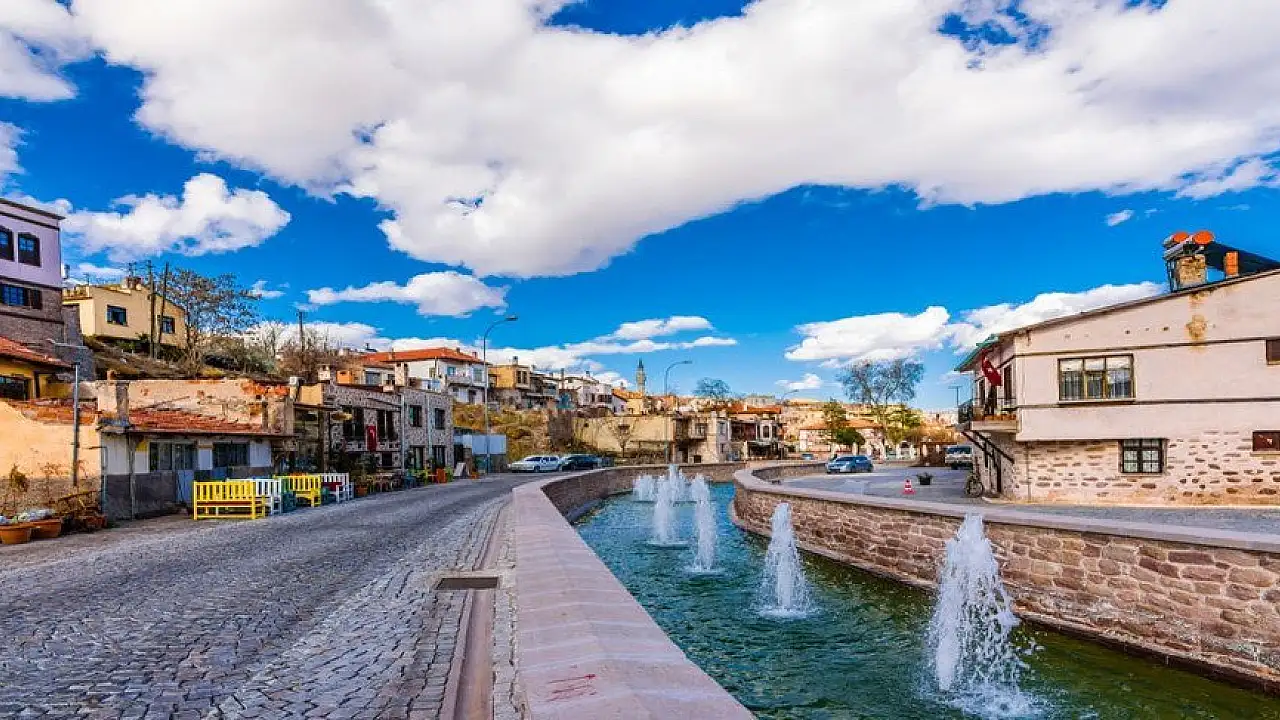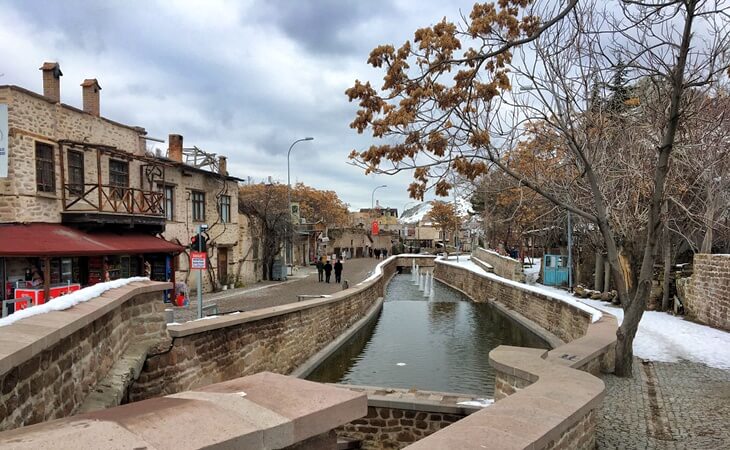When you think of Konya, does your mind first wander to the boundless tolerance of Rumi, the mesmerizing spin of the whirling dervishes, or a warm etli ekmek fresh from the oven? You'd be right on all counts, but right next to this big-hearted city lies a hidden treasure that will take you thousands of years back in time: Sille. Just 8 kilometers from the city's hustle and bustle, a completely different world awaits, carrying the whispers of 5,000 years of history. In this article, we'll whisk you away from the urban chaos into the magical atmosphere of Sille and share our list of things to do in Historic Sille Village as we explore this unique getaway together.
Walk the stone streets of this old Greek village, just a stone's throw from Konya's center
The first thing that strikes you when you step into Sille is how harmoniously the village blends with its geography. This is no ordinary settlement built on a flat plain. The village is nestled on the two slopes of a narrow valley, arranged in tiers like an amphitheater. This architectural layout is no accident. This clever solution, developed to fit houses onto the steep and rugged terrain, also reflects a deep societal respect by preventing any house from blocking another's sun or view.
The stones you feel beneath your feet as you wander these terraced slopes are Sille Stone, the very soul of the village. This special stone, quarried from the region's volcanic land, has adorned not only the houses in Sille but also many historic Seljuk structures in central Konya. As you walk through the narrow streets, you'll notice thin channels carved into the middle of some paths, designed to drain rainwater—a small testament to how the village lives as one with nature.
Sille's stone walls offer more than just architectural beauty; they also tell the story of a culture of coexistence. On this land where Muslim and Christian communities lived in peace for centuries, mosques and churches rise side by side. Walking these streets is not just about touching a historical texture, but also about feeling Anatolia's famous climate of tolerance deep in your bones.

Visit the rock-carved chapels and the historic Aya Elena Church
The brightest star on Sille's historical stage is undoubtedly the Aya Elena Church. Its story dates back to 327 AD, to the pilgrimage of Helena, the mother of Byzantine Emperor Constantine, to Jerusalem. According to legend, Helena stopped in Sille during her journey, saw the rock-carved temples from the early Christian era, and decided to have a church built on this sacred ground. Thus, one of Anatolia's oldest churches was erected in Sille.
That the church has stood for nearly 1,700 years may seem like a miracle, but it's no coincidence. Throughout its history, the structure has held value not just for Christians but for various civilizations. In fact, inscriptions inside, written in Turkish with Greek letters, document repairs made during the reigns of Ottoman Sultans Mahmud II and Abdülmecid. The building even took on a societal role during World War I, serving as one of Turkey's first orthopedic hospitals. Thanks to this protection, the church has survived to this day and now welcomes visitors as a museum—and the best part is, admission is completely free. When you step inside, you are greeted by massive columns made of neatly cut Sille stone, faded frescoes depicting Jesus and his apostles, and a masterfully crafted wooden pulpit.
However, Sille's spiritual heritage is not limited to Aya Elena. The rocky slopes surrounding the valley are filled with countless carved chapels, monasteries, and living spaces, giving the impression of a little Cappadocia. The most famous of these is the Ak Manastır (Hagios Khariton), where it is said that Rumi also visited and spent time. This mystical atmosphere is the most vivid proof of how Sille has blended different faiths in one melting pot. Sille's mystical atmosphere brings to mind other historical settlements in Anatolia. If you'd like to embark on a similar journey, you can also check out our article on the ancient cities of Anatolia.

Relax in one of the tea gardens along the Sille Stream
After your delightful journey through the depths of history, the banks of the Sille Stream are the perfect place to catch your breath. This stream, which once flowed through the village, has been brought back to life in recent years through successful restoration projects by the Selçuklu Municipality, becoming the social heart of the village. Today, both banks of the stream are lined with charming cafes, tea gardens, and restaurants converted from historic Sille mansions.
The existence of these venues is the result of deliberate steps taken to integrate Sille into tourism. The buildings, restored while preserving their historical texture, the pleasant walking paths created around the stream, and the businesses that have opened have all contributed to creating the delightful atmosphere that visitors enjoy today. In other words, behind that cup of coffee you sip by the stream lies a planned effort that allowed the village to rise from its ashes.
You have plenty of options. You can taste local delicacies in an authentic setting like Sille Konak Restaurant & Cafe, which operates in a former priest's house , or you can sip your tea with a view at Teras Sille Cafe. We highly recommend trying a frothy Turkish coffee served in handmade clay cups, a nod to pottery, one of Sille's centuries-old livelihoods. After a pleasant break in Sille, if you want to explore the flavors of Konya more deeply, our page on Konya Meat Bread and Oven Kebab is just for you.

While You're Here...
Before you conclude your Sille tour, visit the Zaman Müzesi (Time Museum), located inside a restored old chapel on the village hill, to see collections of clocks and calendars from the Ottoman and Republican eras. Also, don't leave without seeing the historic Şeytan Köprüsü (Devil's Bridge), which intrigues with its name and the various legends told about it. If you have time, you can head back to central Konya and add the Mevlana Museum, Alaeddin Hill, and the Karatay and İnce Minareli Madrasahs, masterpieces of Seljuk stone masonry, to your itinerary.
Frequently Asked Questions
Question 1: How do I get to Sille Village?Answer: From the center of Konya, near Alaeddin Hill, you can take the 64-A bus to Sille. The journey takes about 20 minutes. It is also easily accessible by private car by following the signs.
Question 2: Is there an entrance fee for Sille Village or Aya Elena Church?Answer: No, both visiting Sille Village and the Aya Elena Church (museum) are completely free.
Question 3: How much time should I spend in Sille?Answer: We recommend setting aside at least 3-4 hours to experience the village's atmosphere, see the main sights, and take a break at a cafe. However, a full-day trip will allow you to explore all of Sille's details more comfortably.
Bibliography: For more detailed and official information about Sille and other cultural heritage sites in Konya, you can visit the relevant pages of the Republic of Turkey Ministry of Culture and Tourism (https://www.ktb.gov.tr/).


 English
English Türkçe
Türkçe